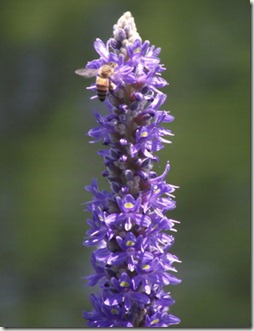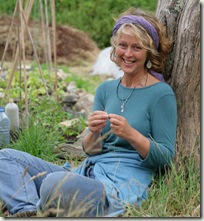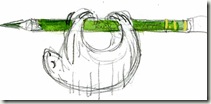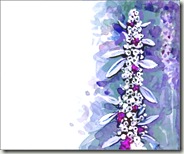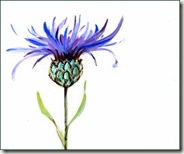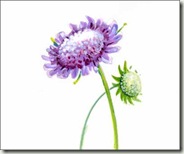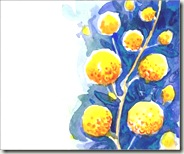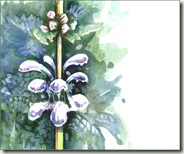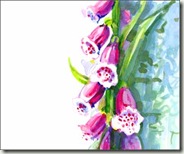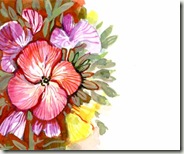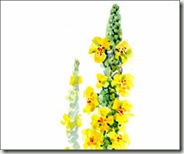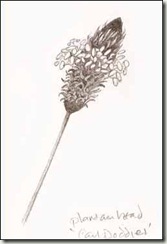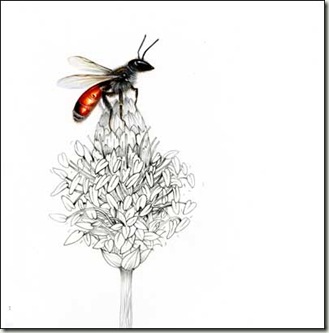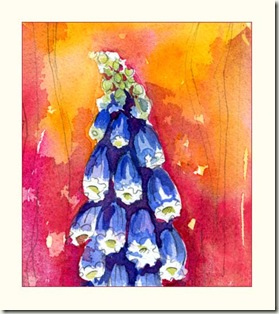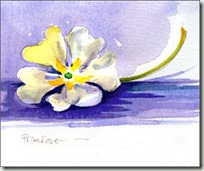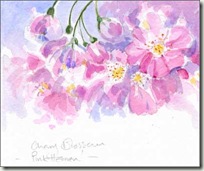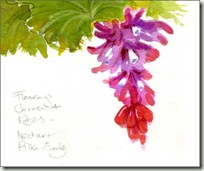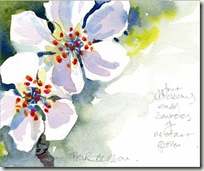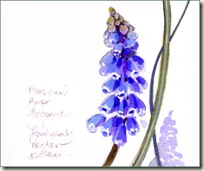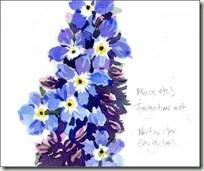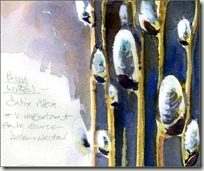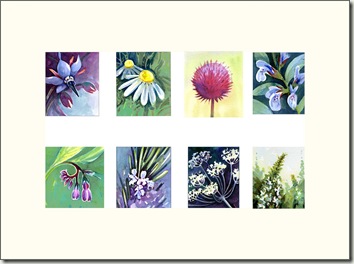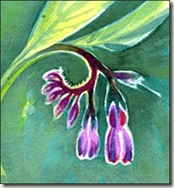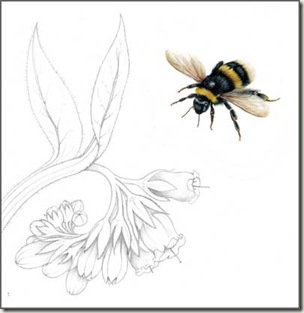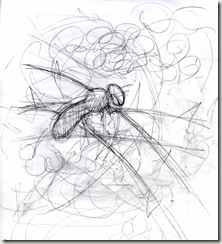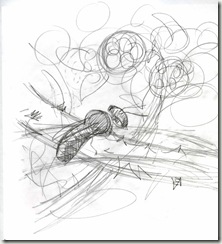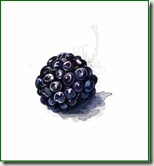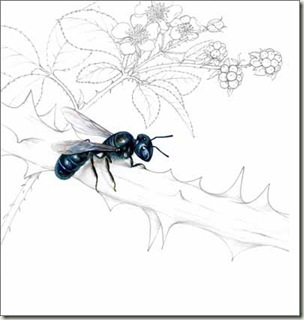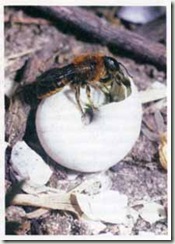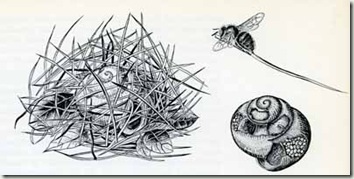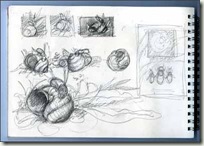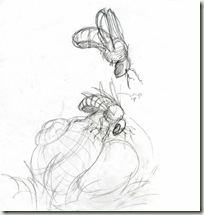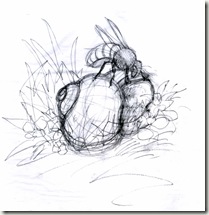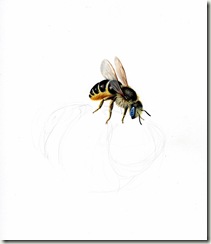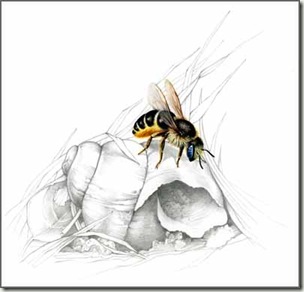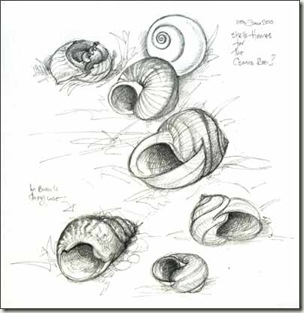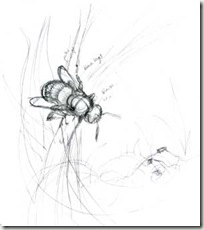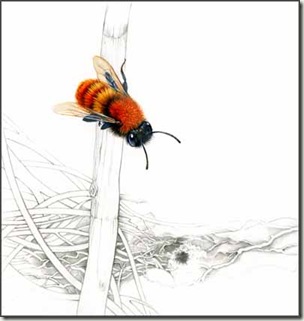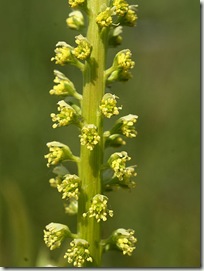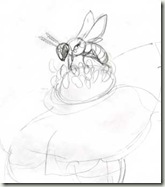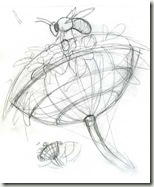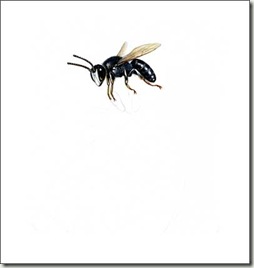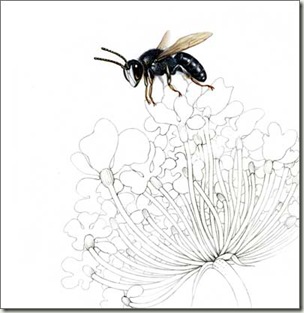I am delighted to say that Brigit Strawbridge of “The Big Green Idea”will be giving a talk at my “Buzz” exhibition on the 9th of June at 7.00.pm at the Gallery.
“BEE AWARE!!!
Bees of all species are in serious decline – and we need to take action URGENTLY to help them!
In this inspiring, informative and passionate talk, Brigit Strawbridge explains the importance of (and the difference between) Honeybees, Bumblebees and Solitary Bees, addresses the myriad problems they face – and offers you loads of tips so you can go home and help them. “
You may recognise Brigit from BBC’s “Its Not Easy Being Green” but I somehow doubt she has much time to relax these days as “The Big Green Idea” is a very busy charity “dedicated to showing people how sustainable living can be easy, healthy, inexpensive and fun.” They have a fantastic “Big Green Bus” which can be booked for events,
”The entire bus is a showcase for sustainable living. We have carefully chosen the flooring, paints, textiles and lighting, all from recycled or sustainable sources, to demonstrate the choices you can make in your own home. The bus is packed with energy-saving devices, water-saving gadgets, natural products for skincare and cleaning, examples of eco-friendly insulation, eco-paints and clothing made from sustainable crops, wormeries, composting systems and recycled garden containers, and much more besides. Outside, we have more interactive displays and a ‘pedal powered smoothie maker’! “
Do go and watch the nice little animation a with cute bee and worm here. I also know that Brigit will be bringing a solitary bee home too. I will be at the gallery off and on for the first two weeks but definitely on that evening and will be happy to chat to people about the bees and the paintings. I will post some more definite times on the blog soon.
WHY BEES MATTER …. If my exhibition and Brigit’s talk go just the tiniest way to making people more “Bee Aware”, it can’t come too soon. I am not a prophet of doom particularly but if you do need convincing that things are not good in the bee world you only have to read this weekends reports abut the terrible USA decline in the bee population.
This is from the Guardian here, read more of this sobering article and do something!
“Fears for crops as shock figures from America show scale of bee catastrophe
Disturbing evidence that honeybees are in terminal decline has emerged from the United States where, for the fourth year in a row, more than a third of colonies have failed to survive the winter.
Flowering plants require insects for pollination. The most effective is the honeybee, which pollinates 90 commercial crops worldwide. As well as most fruits and vegetables – including apples, oranges, strawberries, onions and carrots – they pollinate nuts, sunflowers and oil-seed rape. Coffee, soya beans, clovers – like alfafa, which is used for cattle feed – and even cotton are all dependent on honeybee pollination to increase yields. In the UK alone, honeybee pollination is valued at £200m. Mankind has been managing and transporting bees for centuries to pollinate food and produce honey, nature’s natural sweetener and antiseptic. Their extinction would mean not only a colourless, meatless diet of cereals and rice, and cottonless clothes, but a landscape without orchards, allotments and meadows of wildflowers – and the collapse of the food chain that sustains wild birds and animals.”
I know my blog readers are already bee aware.. (or maybe a bit bee bored ?) but you need to get out there and tell everyone else! Plant some bee flowers, get a hive, make a solitary bee nest, stop using pesticides! Lobby your local politician etc etc .. and do come along to the talk if you can!
But to end on a more optimistic note, here is one happy honey bee foraging on the Blue Pickerel Weed which grows on the lake shores here. I took this photo yesterday on a very hot afternoon.
There were also carpenter bees and mining bees busy around these beautiful flowers.
